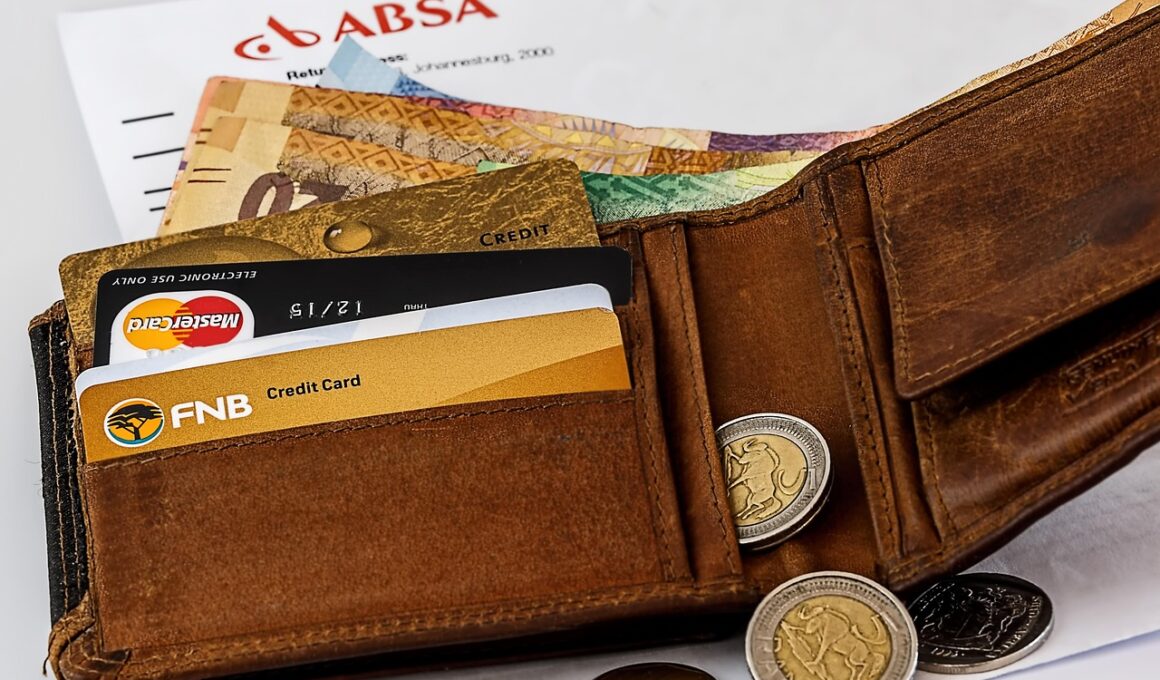The Dangers of Emotional Spending and How to Control It
Emotional spending can wreak havoc on personal finances and lead to unsustainable habits. Many individuals resort to shopping to cope with feelings of stress, sadness, or anxiety. This reflexive behavior often results in purchasing items that are entirely unnecessary, which can escalate debts, sabotage budgets, and create financial chaos. Recognizing the triggers that lead to emotional spending is crucial for developing healthier financial habits. This involves introspection to identify patterns of thought and triggers that might prompt excessive or impulsive purchases. Once these patterns are recognized, individuals can explore alternative coping mechanisms, such as exercising, engaging in hobbies, or practicing mindfulness. By addressing the emotional triggers, you can mitigate the urge to spend unnecessarily. It’s essential to create a budget that accounts for fixed expenses while allowing a small portion for discretionary spending. By monitoring your daily expenses and setting sensible spending limits, you can cultivate a more disciplined approach to finances. Tools like budgeting apps can facilitate this process, providing insights into spending habits and identifying areas for improvement. Ultimately, conquering emotional spending begins with self-awareness and proactive measures.
A significant aspect of combating emotional spending lies in understanding the psychology behind it. Many people find that their shopping habits are often deeply rooted in their self-esteem and identity. Feeling inadequate can drive the urge to purchase items that project a certain persona or status. This behavior can lead to a cycle where satisfaction is momentary, and disappointment quickly follows. It’s vital to differentiate between wants and needs, ensuring that spending aligns with personal values. When individuals consciously evaluate their purchases against their goals and principles, they become more aware of their financial decisions. Establishing clear financial goals can also help curtail emotional spending habits. For example, setting up a savings plan for vacations, emergencies, or major life events can redirect focus from immediate gratification to long-term satisfaction. Education around financial literacy can also empower individuals to make informed decisions, understand the implications of debt, and appreciate the benefits of saving. Engaging with a financial coach can provide personalized strategies tailored to each individual’s situation, helping them navigate difficult emotions and financial challenges effectively.
Strategies to Control Emotional Spending
Implementing strategies to manage emotional spending can significantly enhance financial well-being. Firstly, establishing a 24-hour rule before making purchases is a powerful tactic. This strategy encourages waiting a full day before buying any non-essential items, giving your mind time to consider whether the purchase is necessary or merely a fleeting desire. Additionally, creating a wishlist can help separate genuine wants from impulsive urges. By delaying gratification, individuals often find that the desire to purchase diminishes over time. Furthermore, maintaining a spending journal allows individuals to track their spending habits while reflecting on purchasing motivations. Writing down feelings experienced during purchases can illuminate patterns of behavior and highlight emotional triggers. Sharing these insights with a trusted friend or financial coach provides accountability, which can help individuals stay focused on their goals. Engaging in community activities or groups focused on financial literacy can also support those looking to change their spending habits. Understanding that it’s acceptable to ask for help can empower individuals to pursue a path toward financial health with support and encouragement from others facing similar challenges.
Another essential technique involves setting up automatic transfers to savings accounts to prioritize savings over spending. This strategy utilizes the ‘out of sight, out of mind’ psychology; when money is automatically directed towards savings, individuals are less likely to spend it impulsively. Creating a specific financial goal, such as saving for a future purchase, can also minimize the desire to spend emotionally by providing a sense of direction. In addition to these strategies, reflecting on past spending is critical in identifying patterns of emotional spending. Consider evaluating your last few months of spending and categorize expenses to see where impulses can be curbed. Understanding your spending triggers can also illuminate the times you’re more likely to shop emotionally. Implementing mindfulness techniques can assist individuals in overcoming spontaneous urges to shop, leading to healthier financial behaviors. Techniques such as meditation, deep breathing exercises, or journaling can effectively ground you. Engaging in these practices may lead to clarity and improved emotional regulation, allowing individuals to develop resilience against unhealthy financial habits over time. Ultimately, a combination of these techniques can create a robust guard against emotional spending.
Seeking Professional Support
Considering professional guidance can provide a significant advantage in combating emotional spending. Many people benefit from the expertise of financial coaches or therapists who specialize in financial behavior. These professionals can offer tailored strategies addressing individual needs and emotional challenges related to spending. Having someone to discuss your financial habits with can pave the way for accountability and insightful guidance. Supportive environments such as financial workshops or group sessions can also provide valuable resources. Members often share personal experiences, revealing various ways they address emotional spending. This peer support can reinforce positive behaviors and inspire one to make lasting changes. Furthermore, accountability partners can play a crucial role. Sharing financial goals with a trusted friend or family member allows them to periodically check in on your progress. They can lend support during moments of temptation, reminding you of your aspirations and the reasons behind your behavioral modifications. Engaging in supportive community spaces fosters a sense of belonging and understanding. Ultimately, these connections can empower you to take full control of financial decisions, leading to a healthier relationship with spending.
Creating and practicing healthy financial habits can significantly reduce emotional spending damage. Establishing a budget can provide clear guidelines for spending, and it helps define financial priorities. Adhering to a routine through consistent budgeting methods can eliminate the emotional turmoil associated with spendings, such as guilt or regret. Consider allocating a planned percentage of income to discretionary spending which must be adhered to strictly. This ensures that spontaneous purchases won’t deplete essential funds while still satisfying desires in a controlled manner. Community resources—such as local financial literacy programs—can also provide an educational benefit. Many organizations offer free classes, resources, and tools designed to enhance public understanding of financial management. Accessing these resources not only fosters knowledge but also reinforces personal accountability within the community. The more informed individuals become, the better equipped they are to handle emotions associated with spending. A proactive approach to financial education creates resilience against impulsive purchases, cultivating healthy behaviors over time. Focusing on long-term financial health ensures that relationships with spending evolve positively, fostering a sense of accomplishment and empowering individuals to achieve their financial goals.
Moving Forward with Confidence
Ultimately, overcoming emotional spending is a journey requiring dedication and proactive strategies. Individuals must acknowledge the emotional triggers leading to impulsive spending while actively seeking solutions tailored to their needs. By implementing various strategies, including establishing a budget and reflecting on past spending habits, personal finance can improve significantly. Furthermore, the role of community support and professional guidance cannot be understated. Engaging with others fosters a helpful environment where shared experiences and success stories inspire widespread change. Cultivating a mindset focused on self-improvement encourages individuals to develop resilience against unhealthy financial behaviors. It also paves the way for healthier financial practices. Remember that this is not an instantaneous process; change takes time and commitment. Celebrate small victories as they come, reinforcing positive behavior through engagement and continuous improvement. The ultimate goal is to create a sustainable relationship with money. When individuals learn to manage their emotions effectively, financial well-being can become an achievable reality. Moving forward, commit to continued self-reflection, ongoing education, and community engagement. With this multifaceted approach, financial confidence can be attained and maintained successfully.
In conclusion, addressing emotional spending is essential for achieving financial stability. By becoming aware of the emotions driving excessive purchasing, individuals can implement targeted strategies to regain control over their finances. Employing methods such as the 24-hour rule, maintaining a spending journal, and utilizing professional support can significantly reduce the impact of emotional spending. Moreover, joining a supportive community can bolster motivation, making it easier to develop better financial behaviors. It is essential to adopt financial education as a lifelong pursuit, enabling individuals to make informed decisions and prioritize their well-being. Consistent self-reflection, budgeting, and emotional management are critical steps in creating a robust financial plan. Remember, the journey to financial health requires patience, commitment, and support from both professionals and peers. Embrace the process, and prioritize learning and growth as you navigate emotions and spending habits. With time and effort, emotional spending can transform from a source of distress into an opportunity for empowerment and self-awareness. Stepping forward with increased understanding of your financial behavior can ultimately lead to a life of financial freedom and security.


